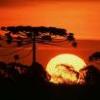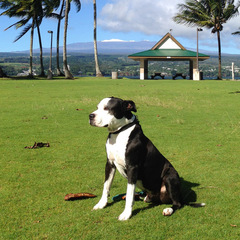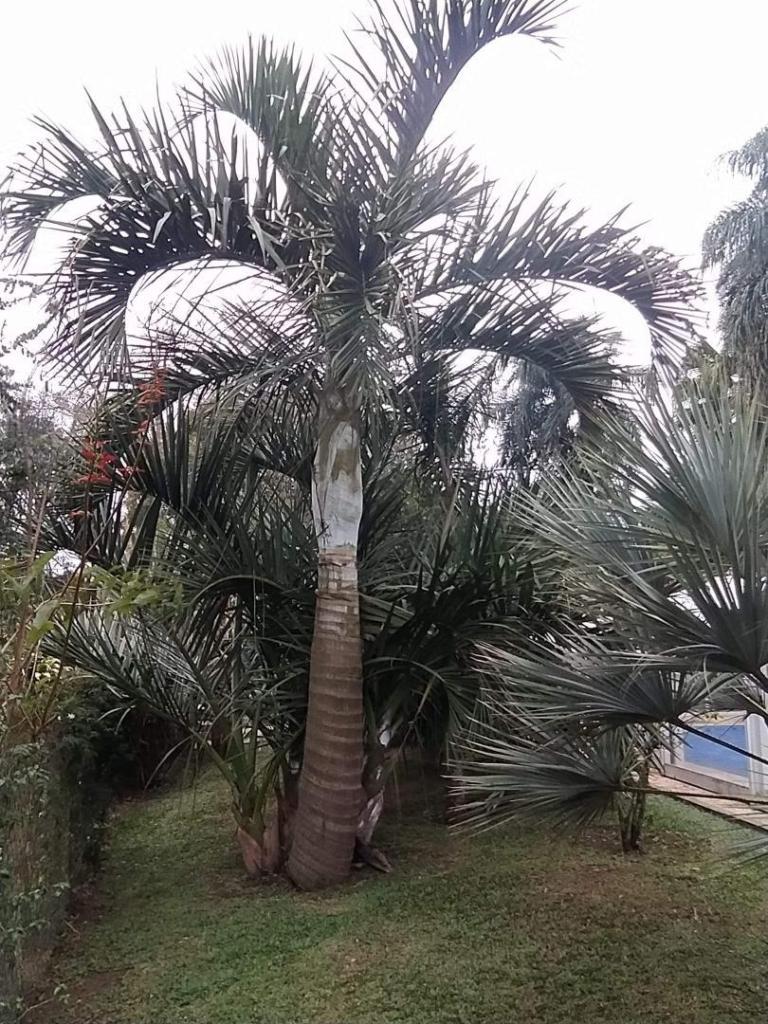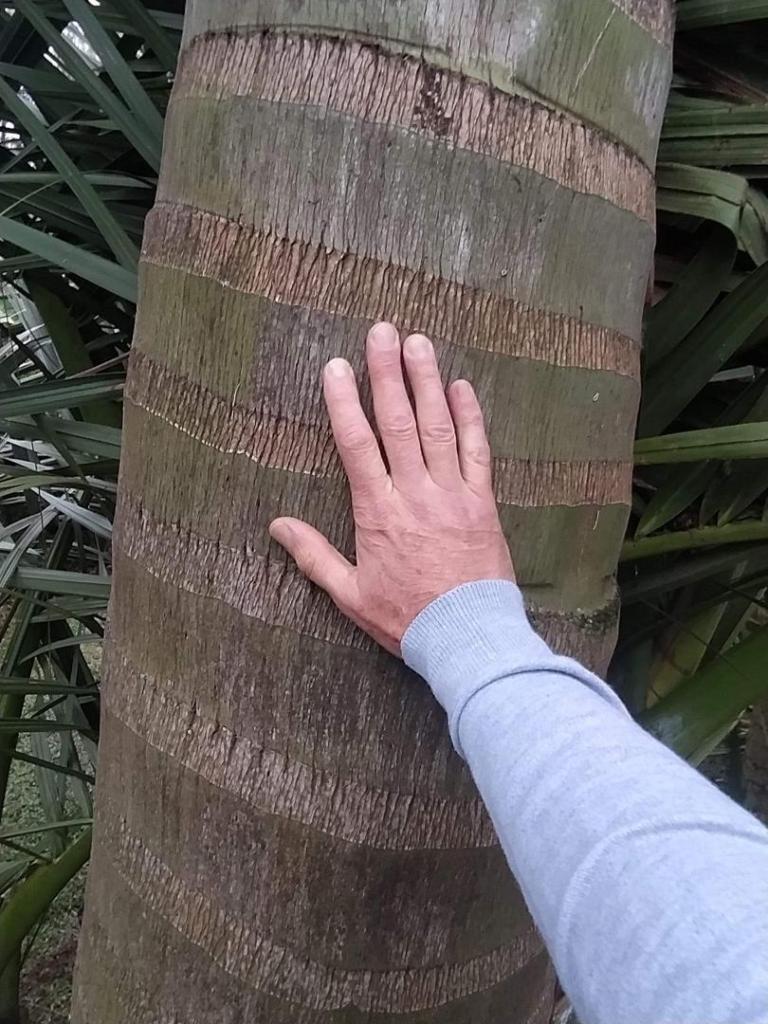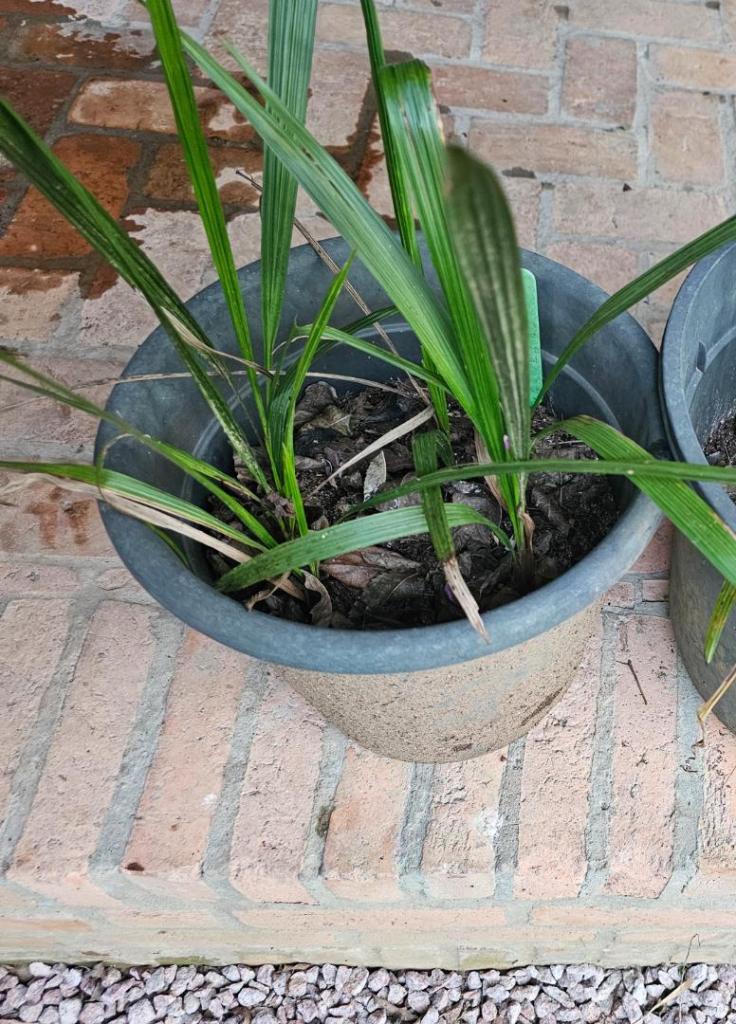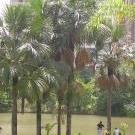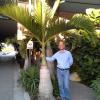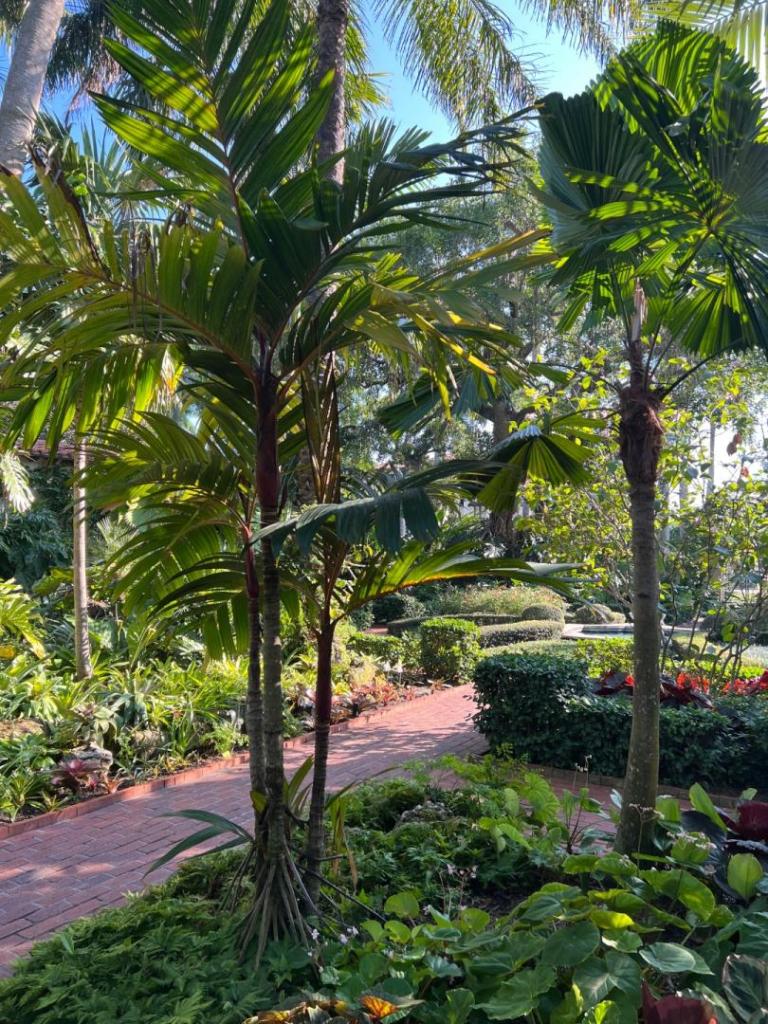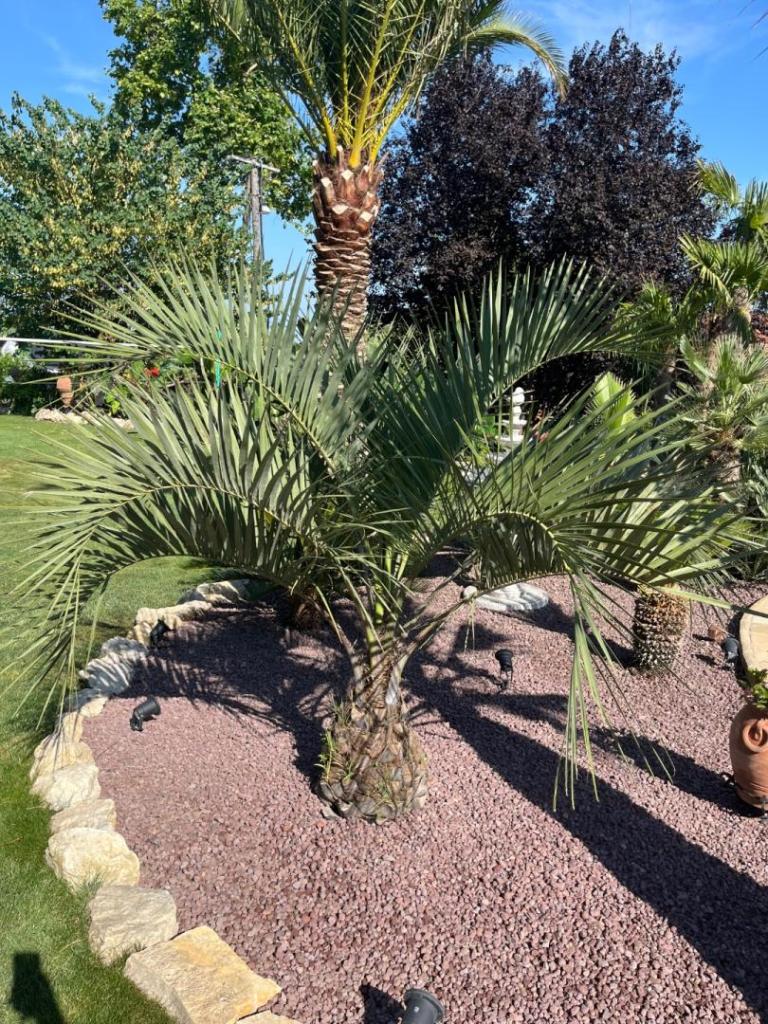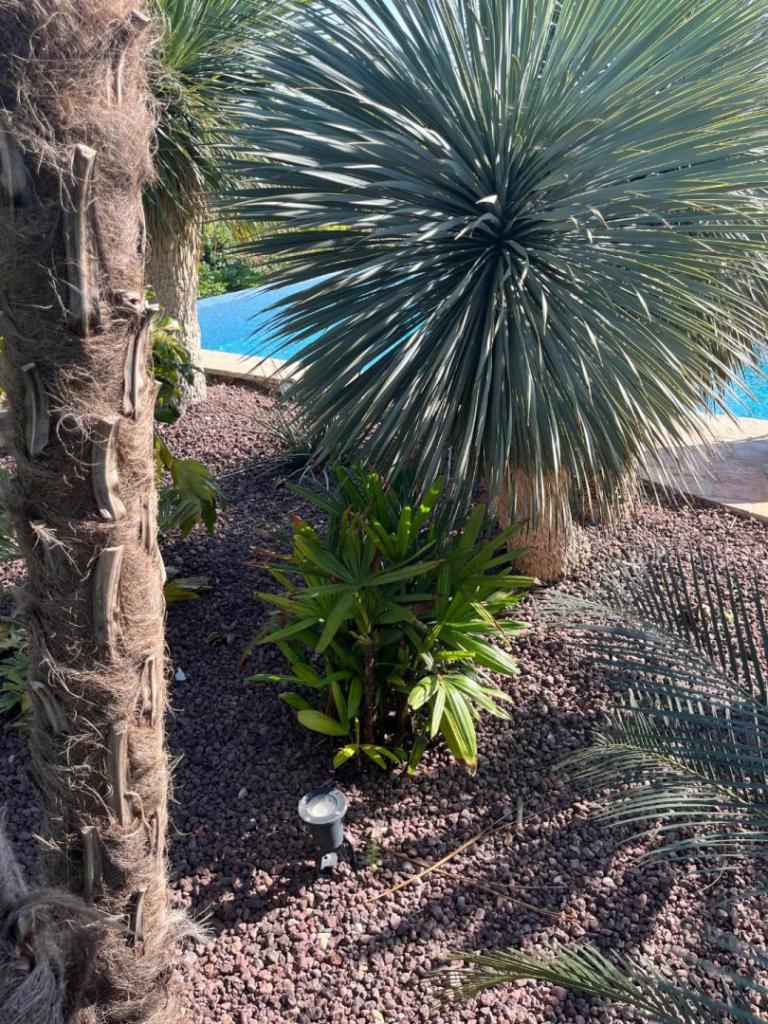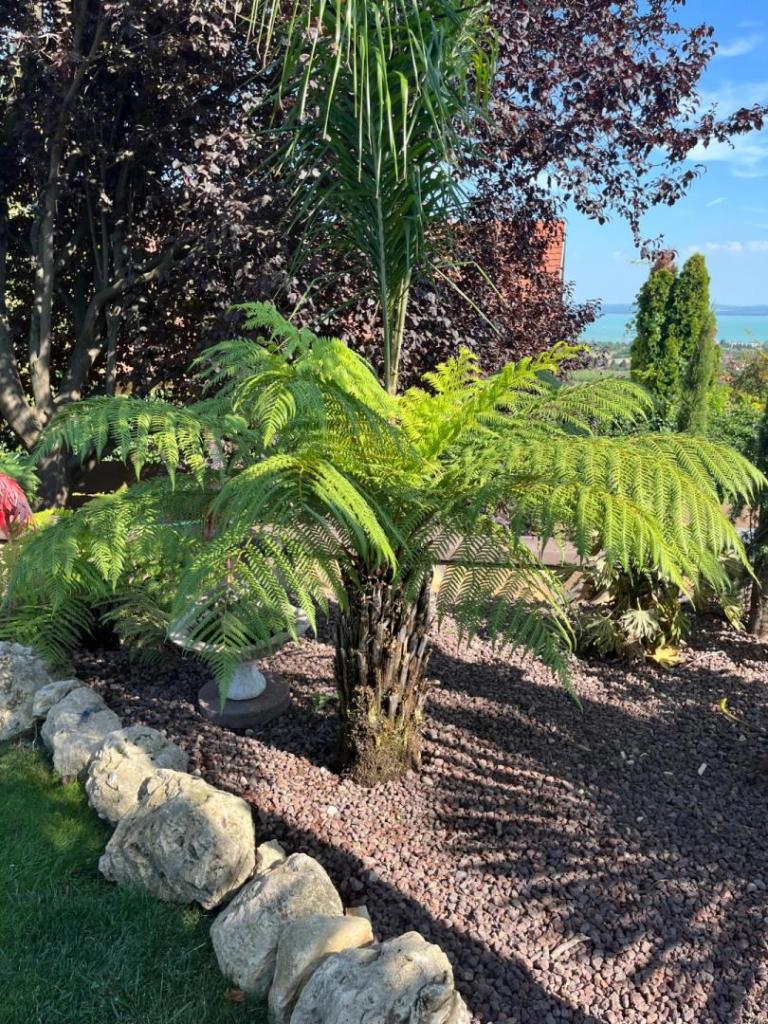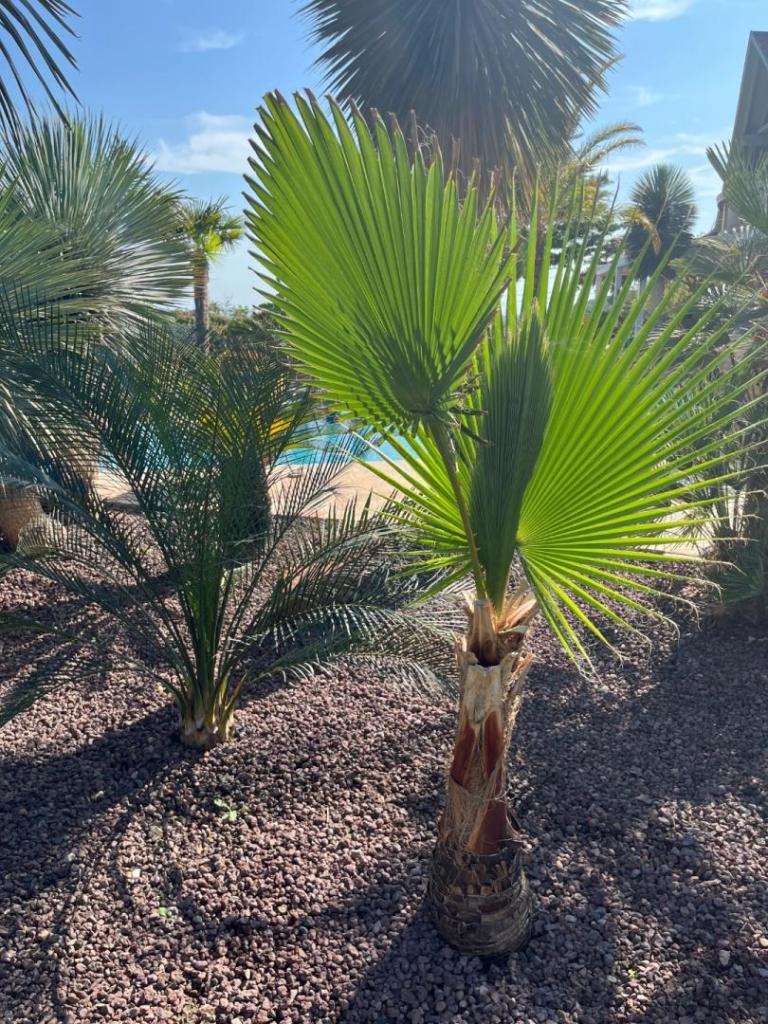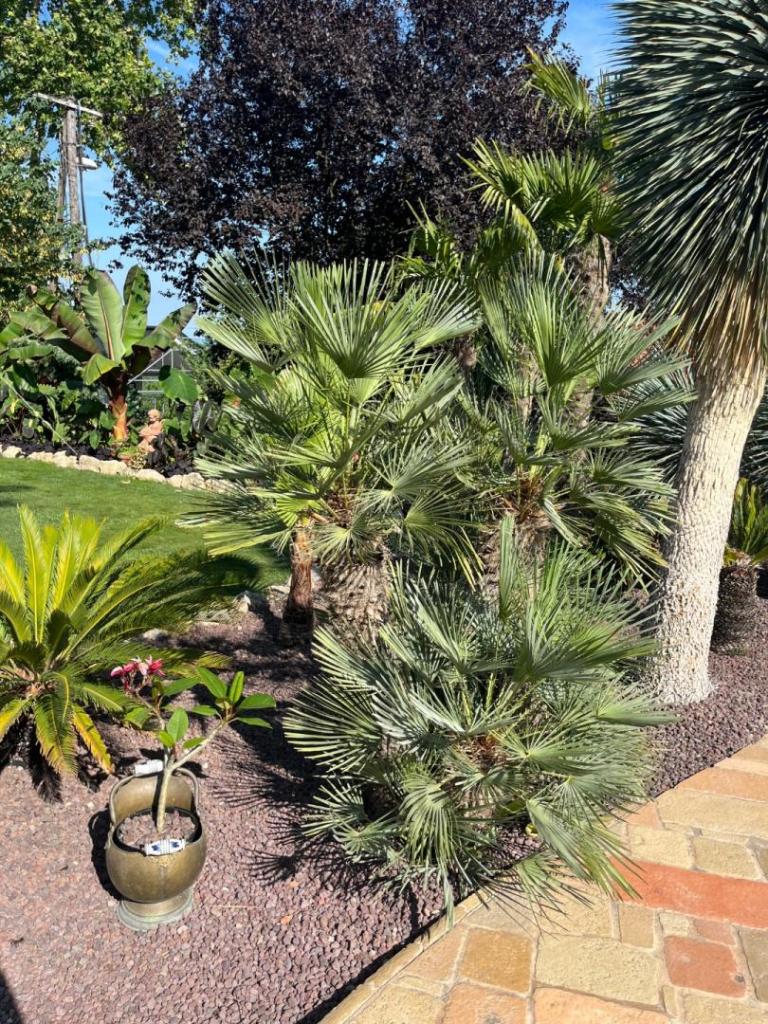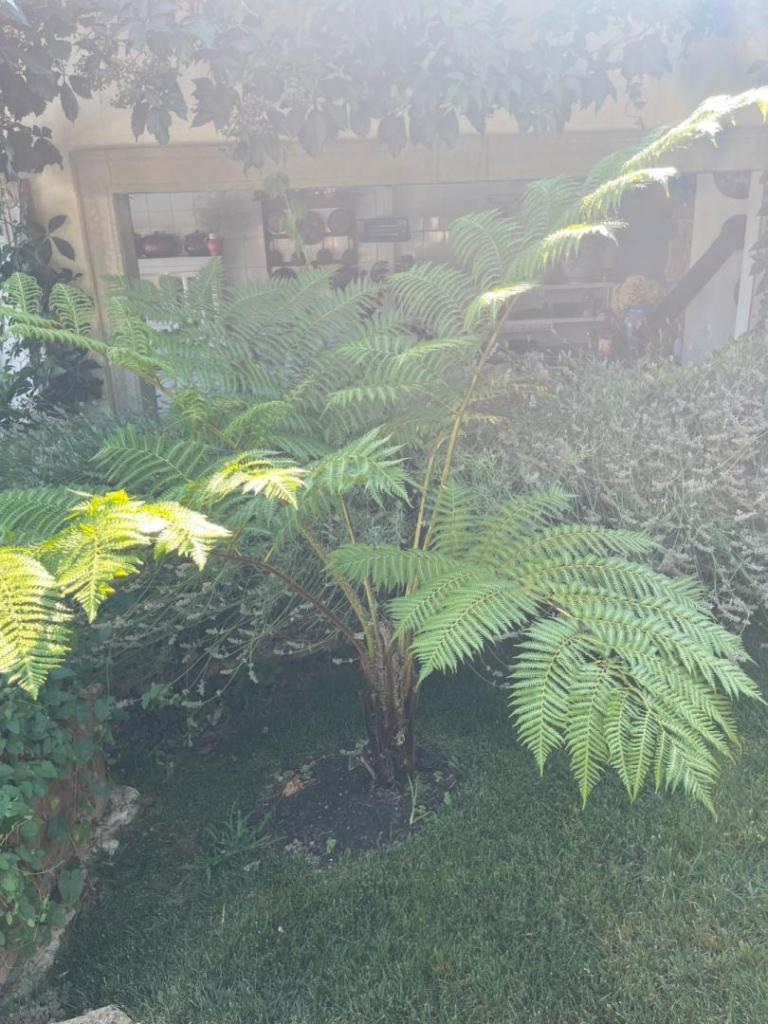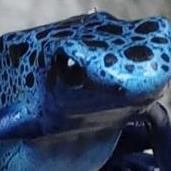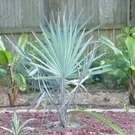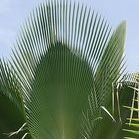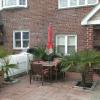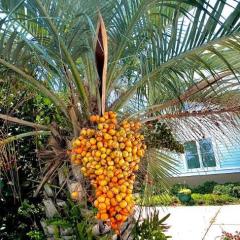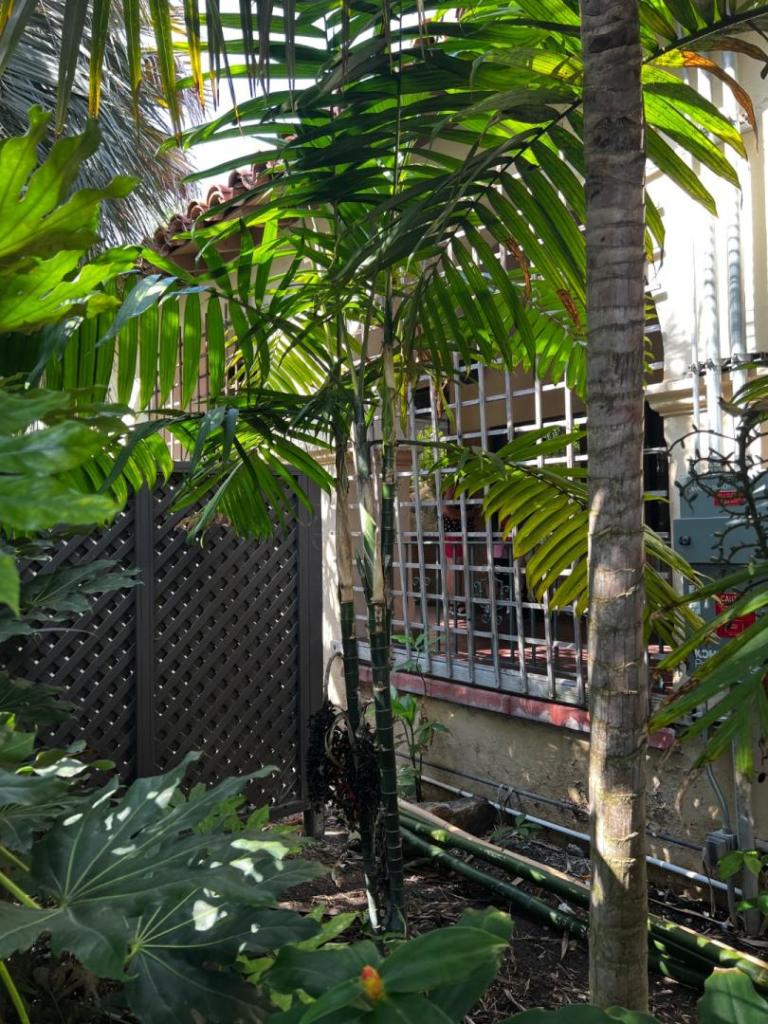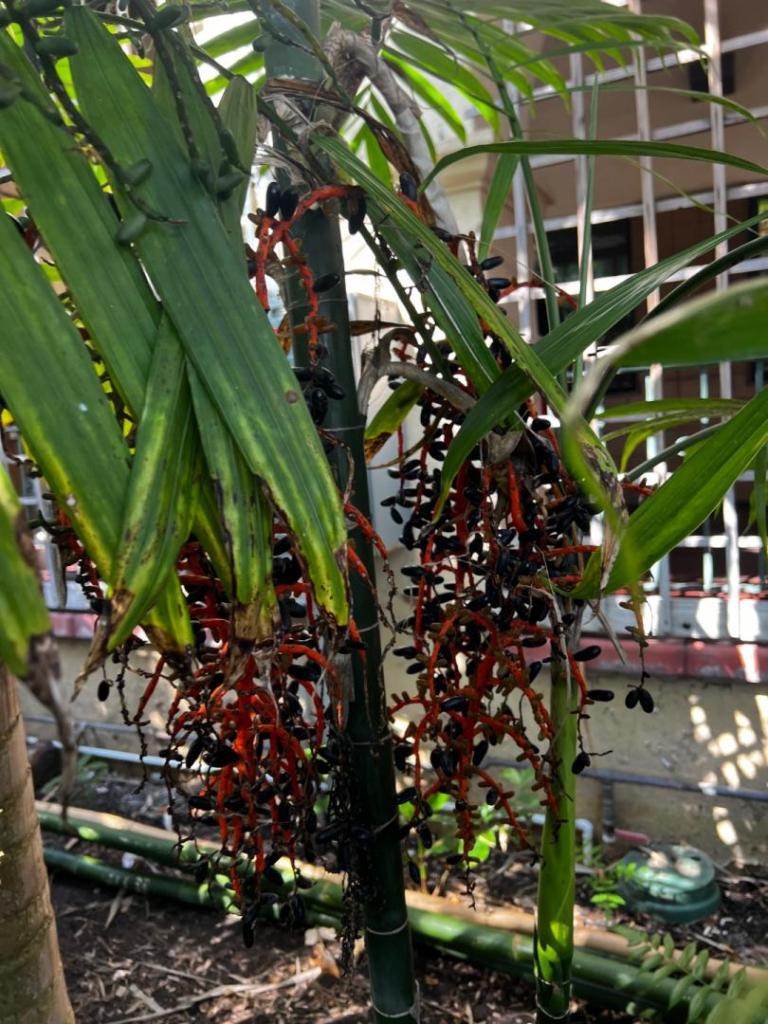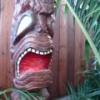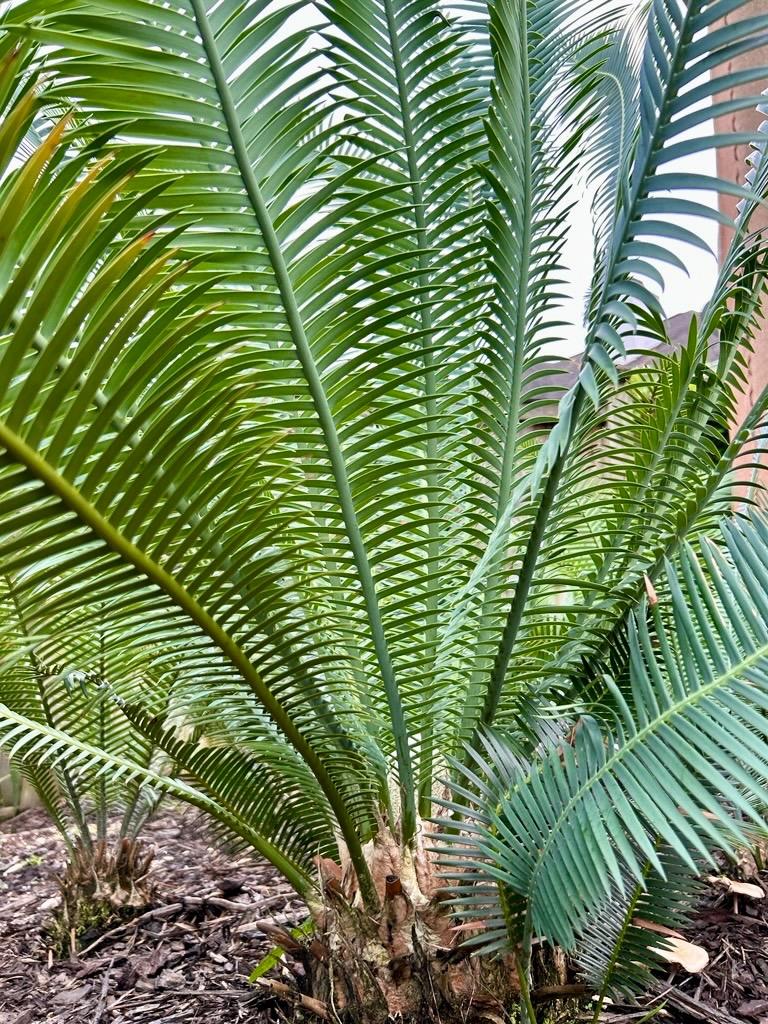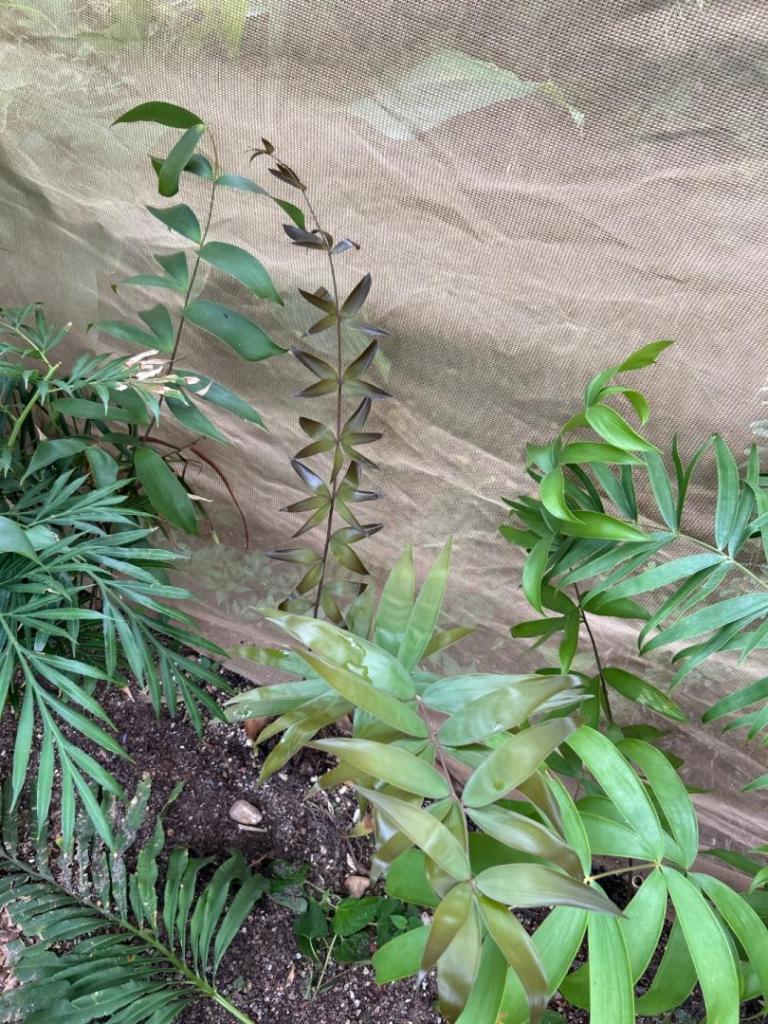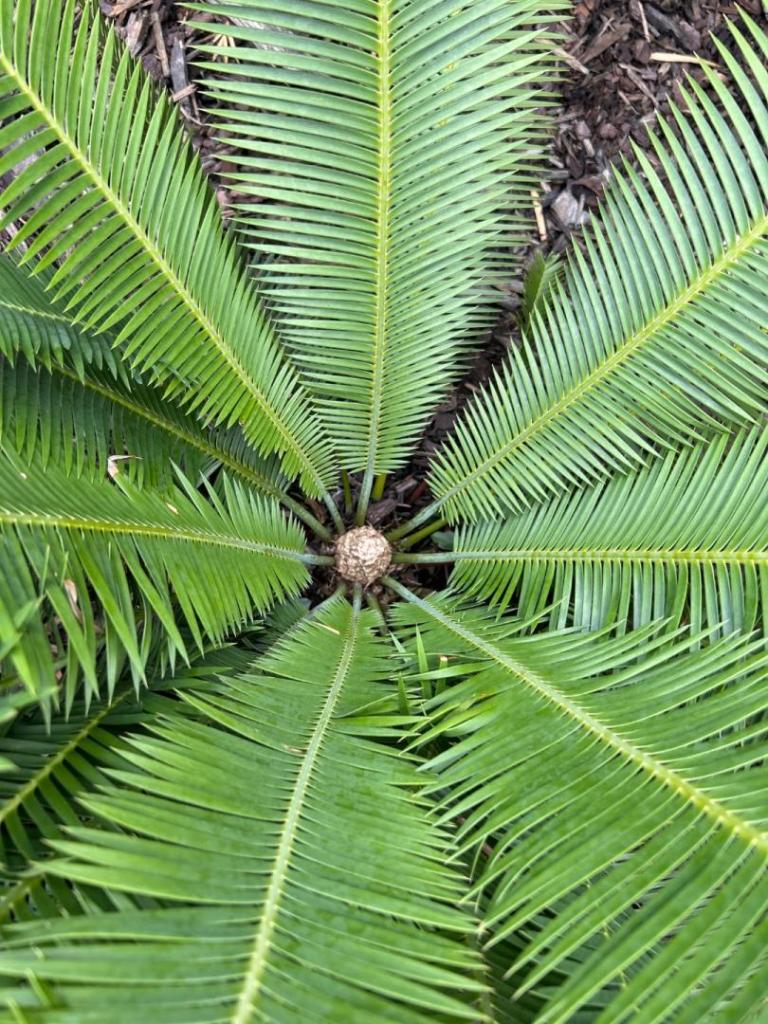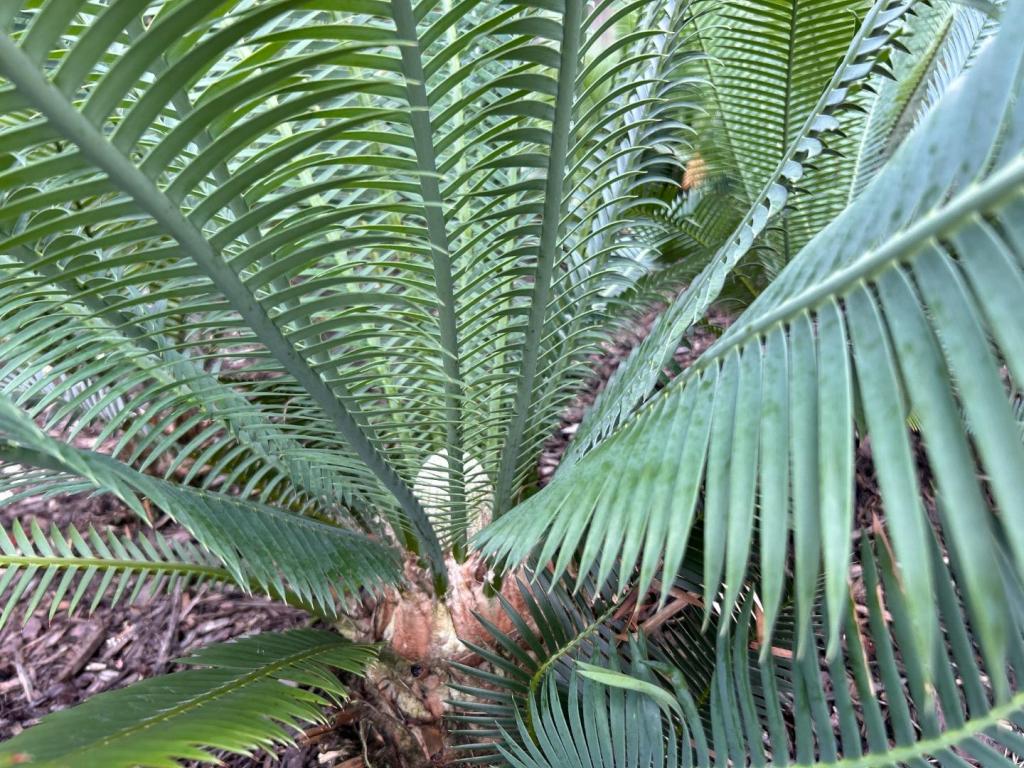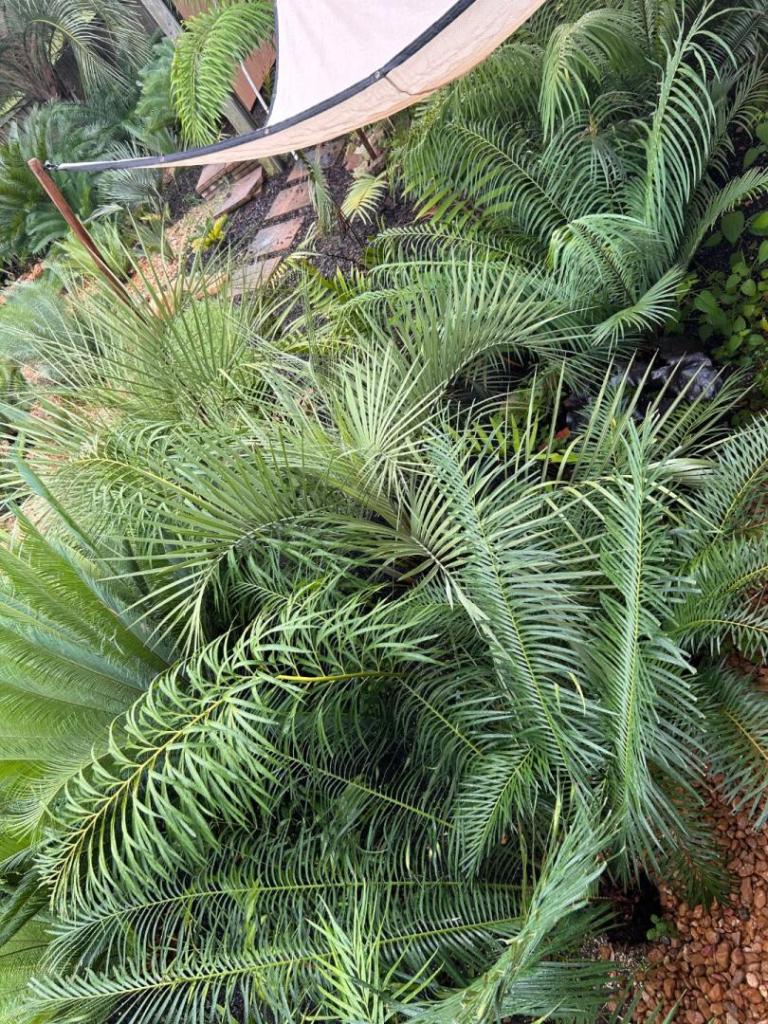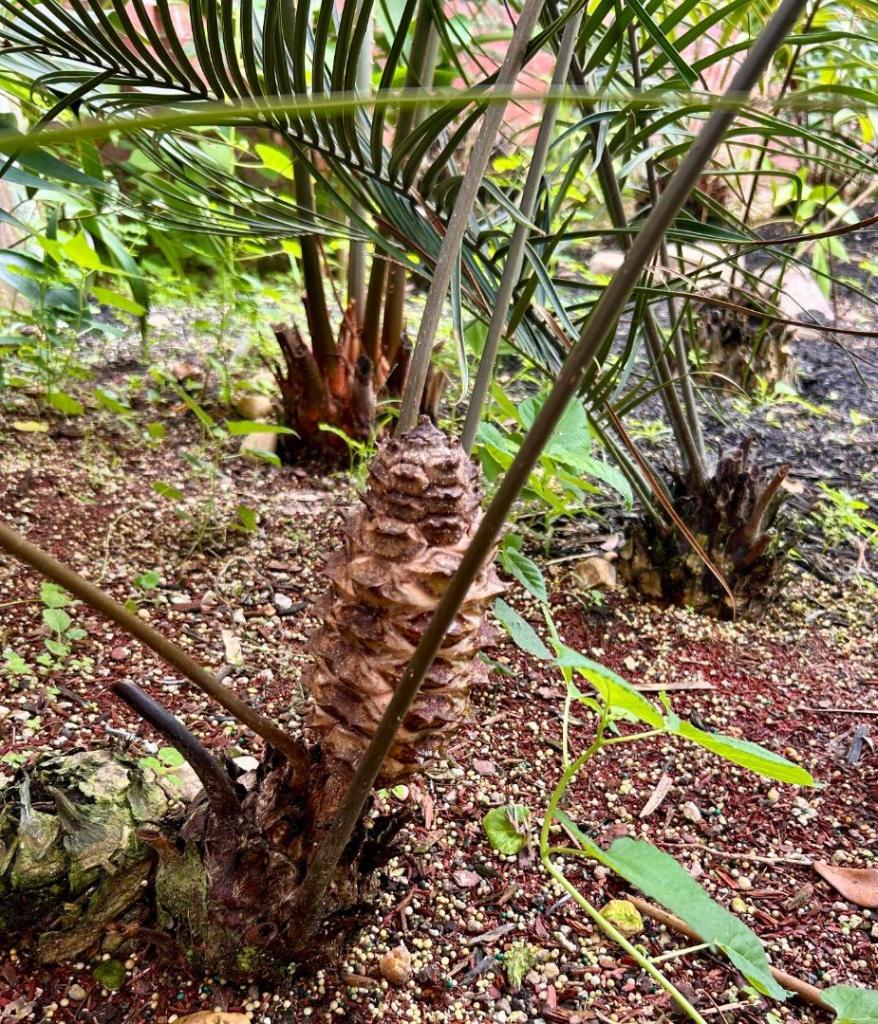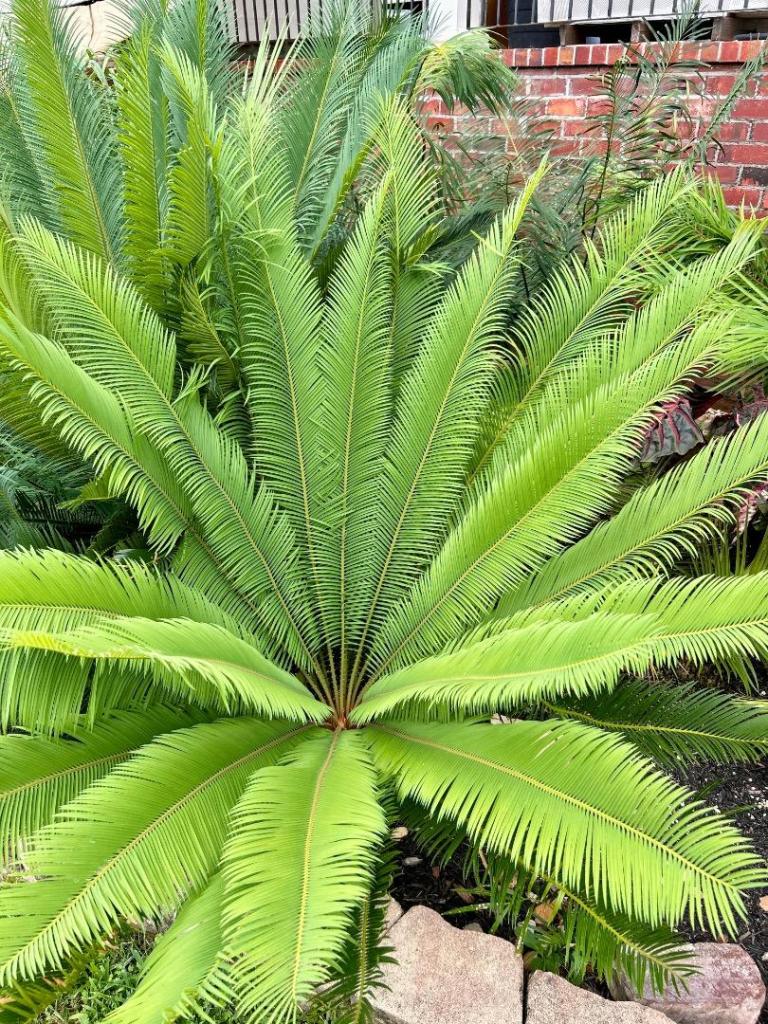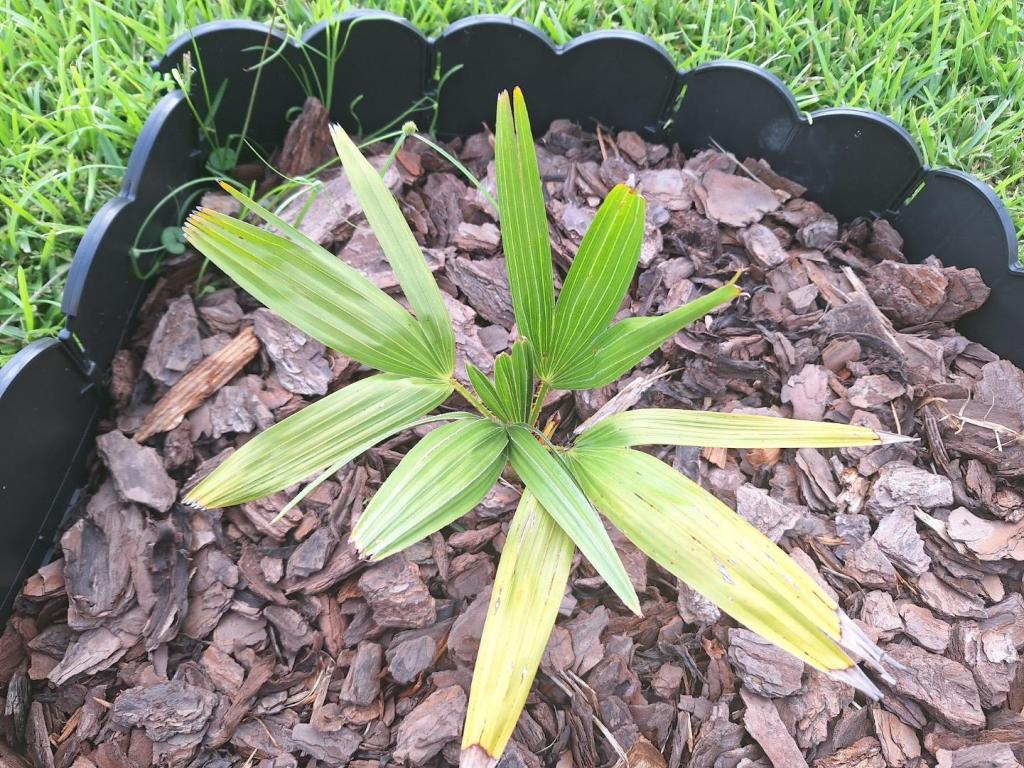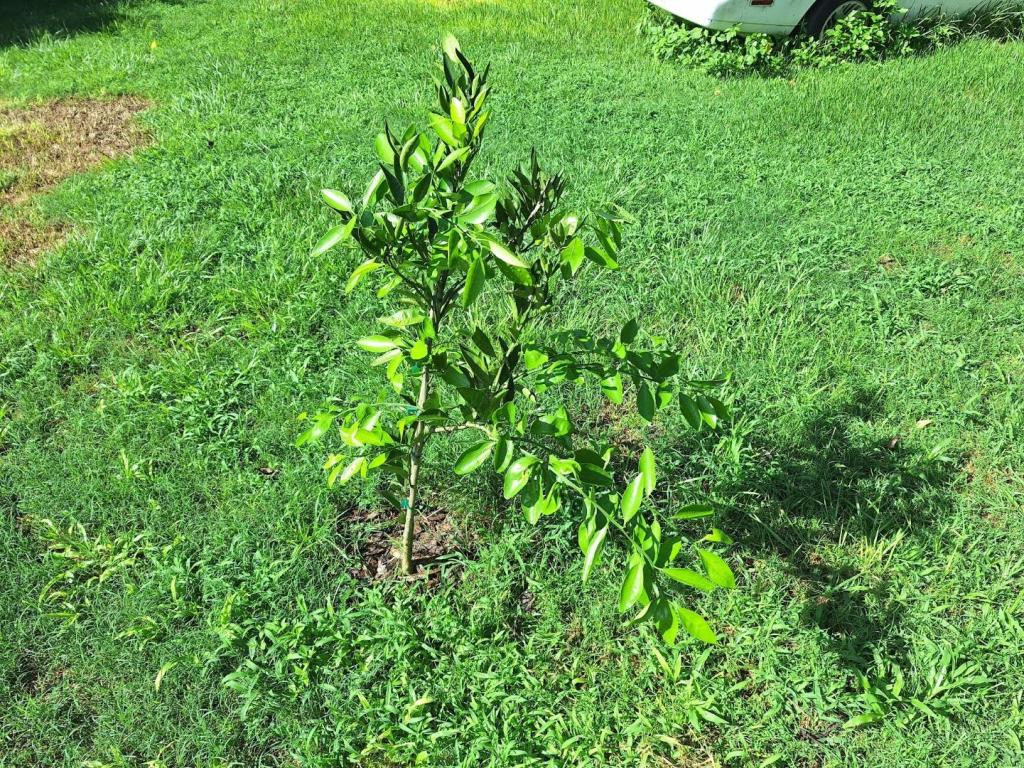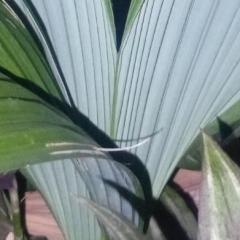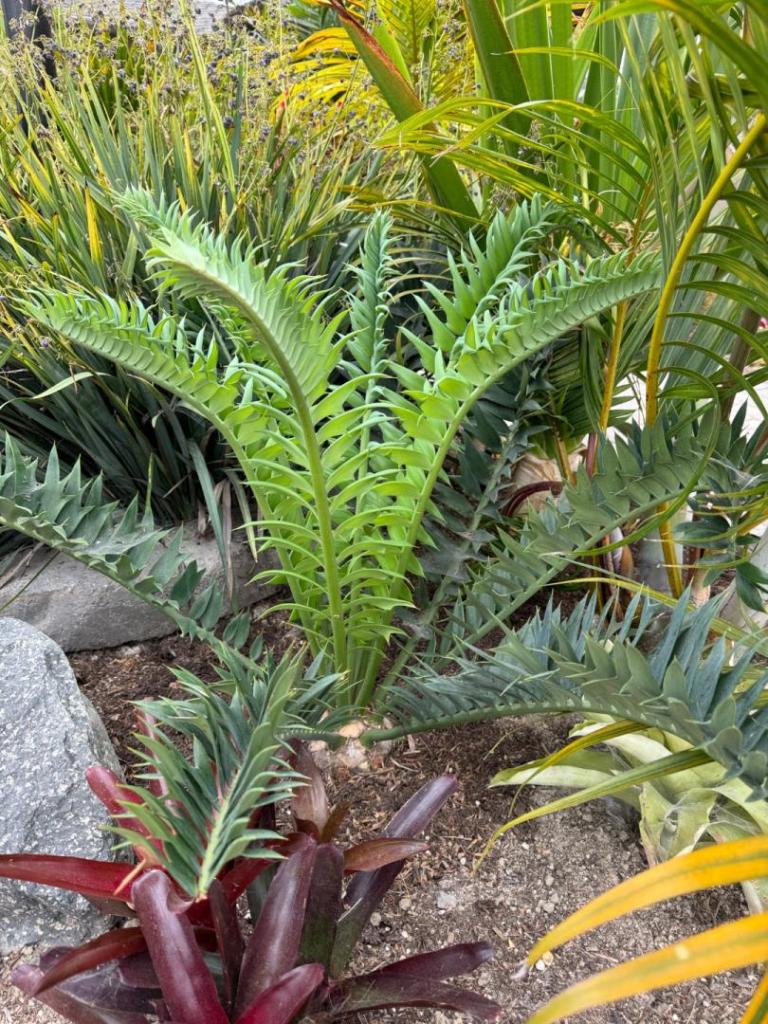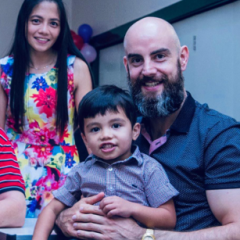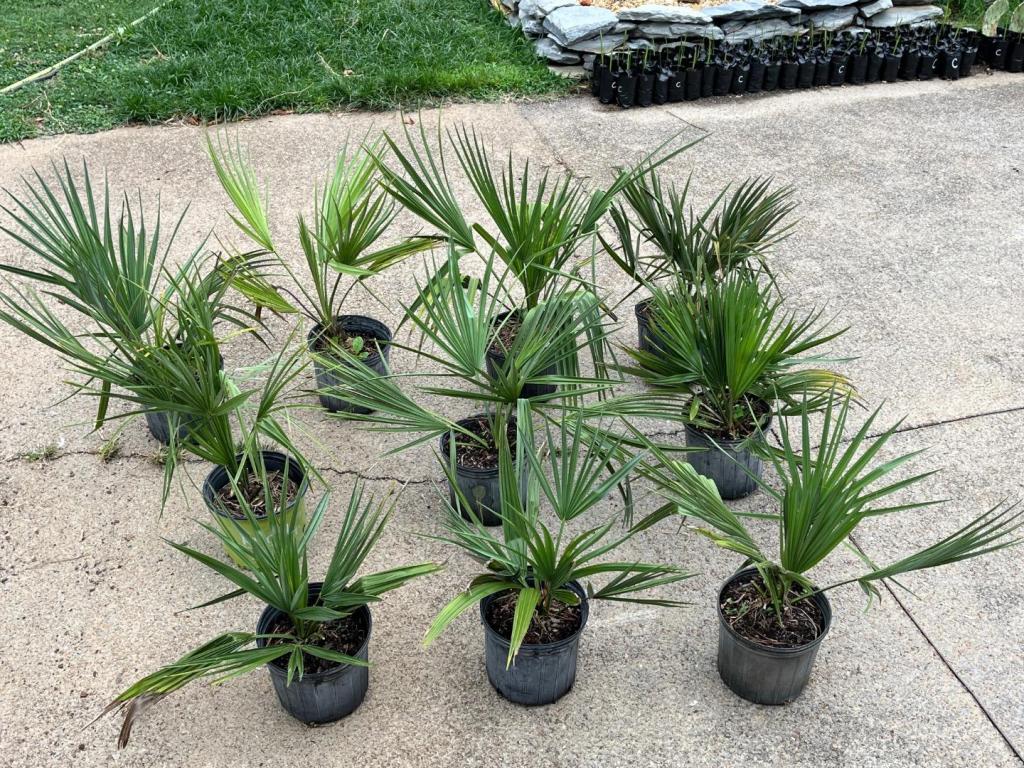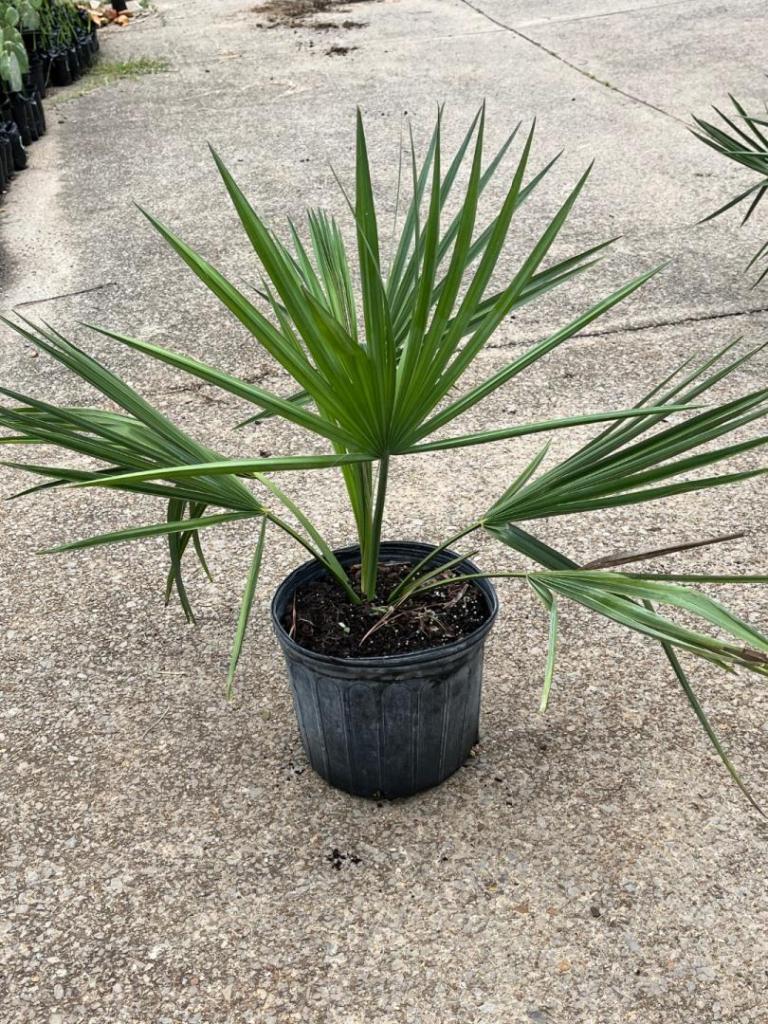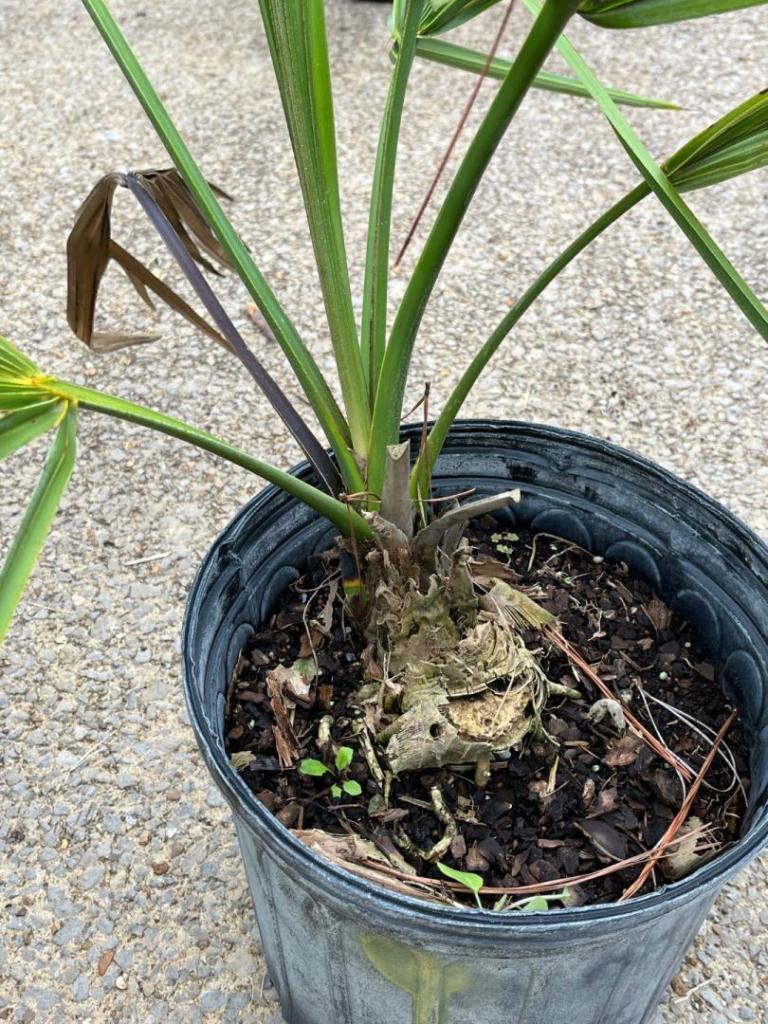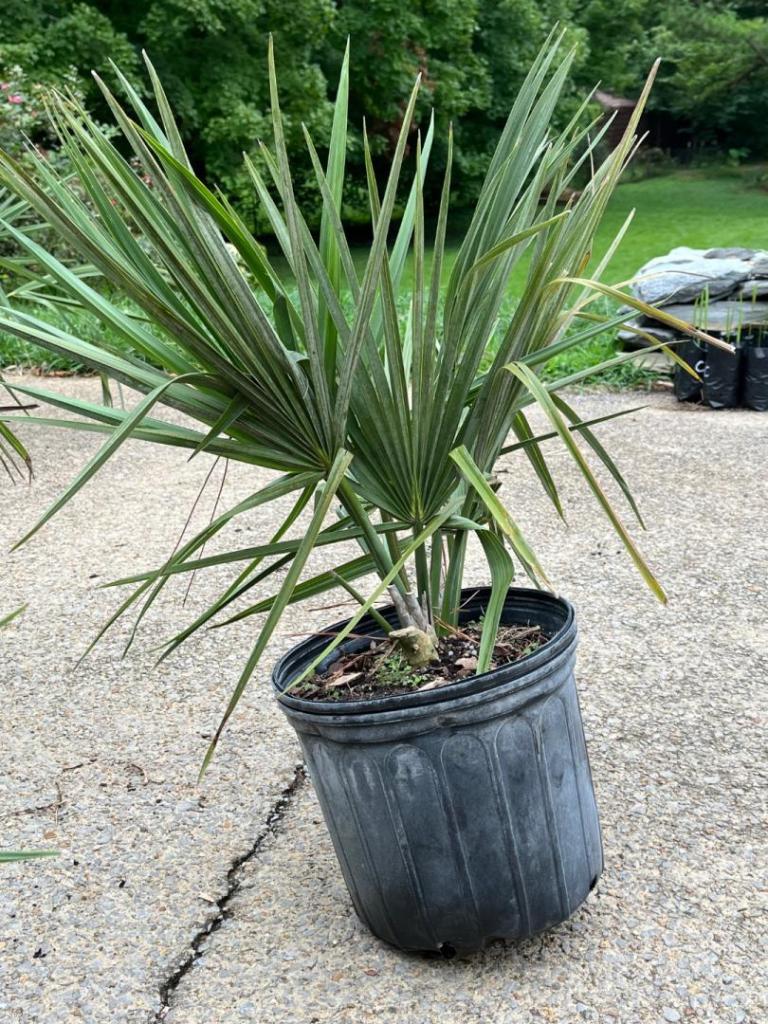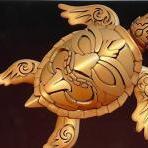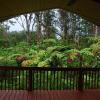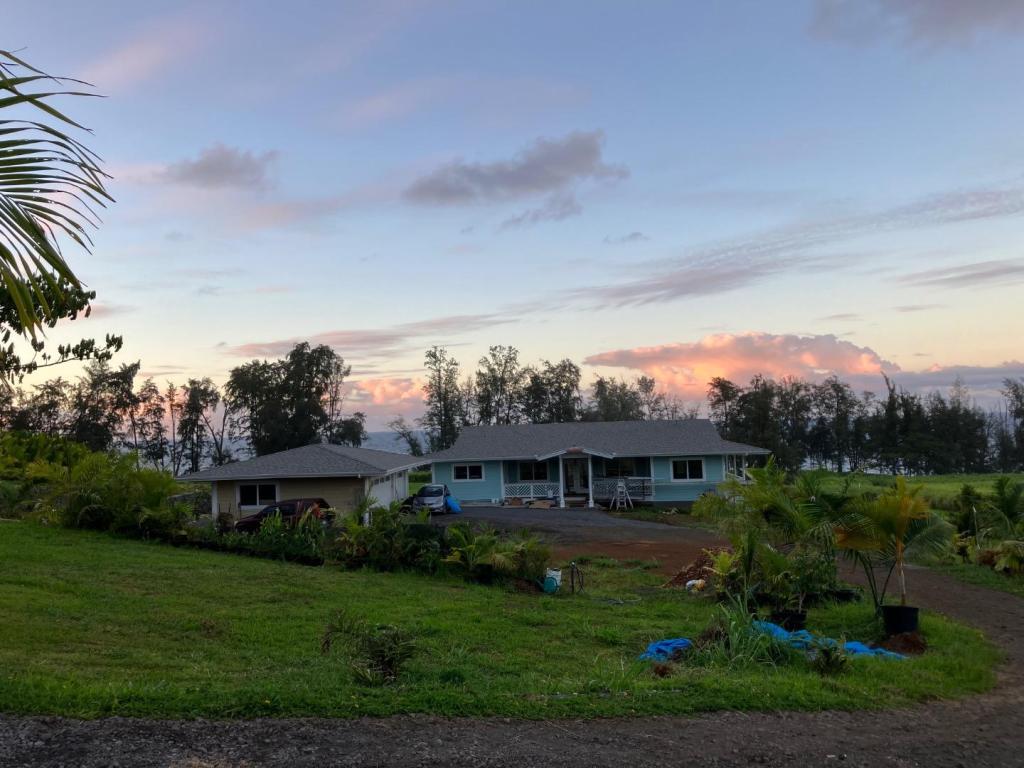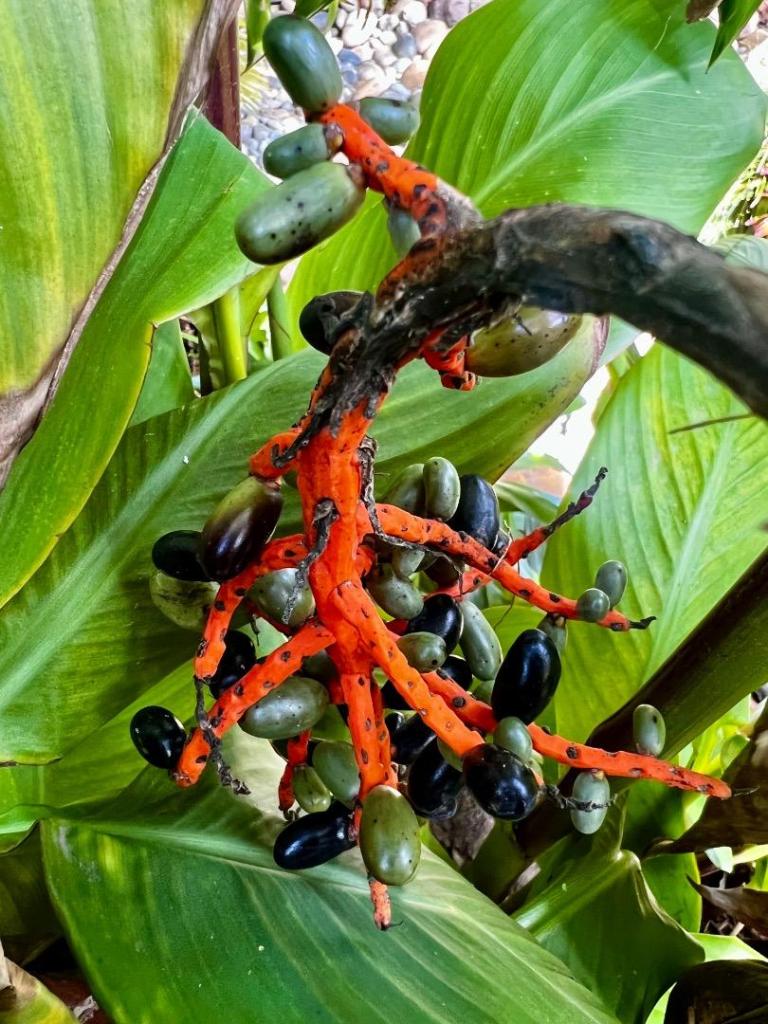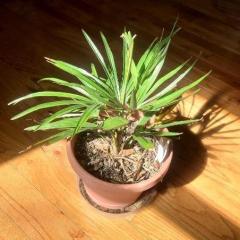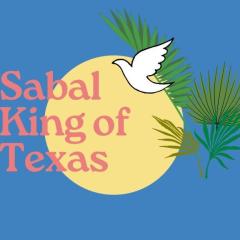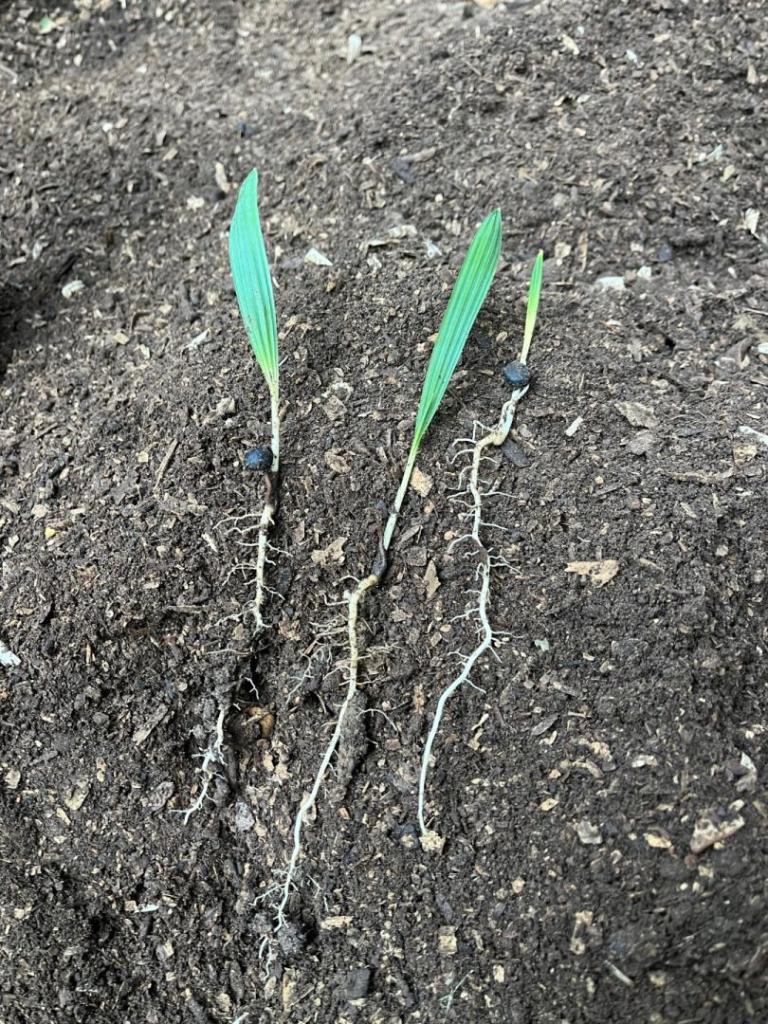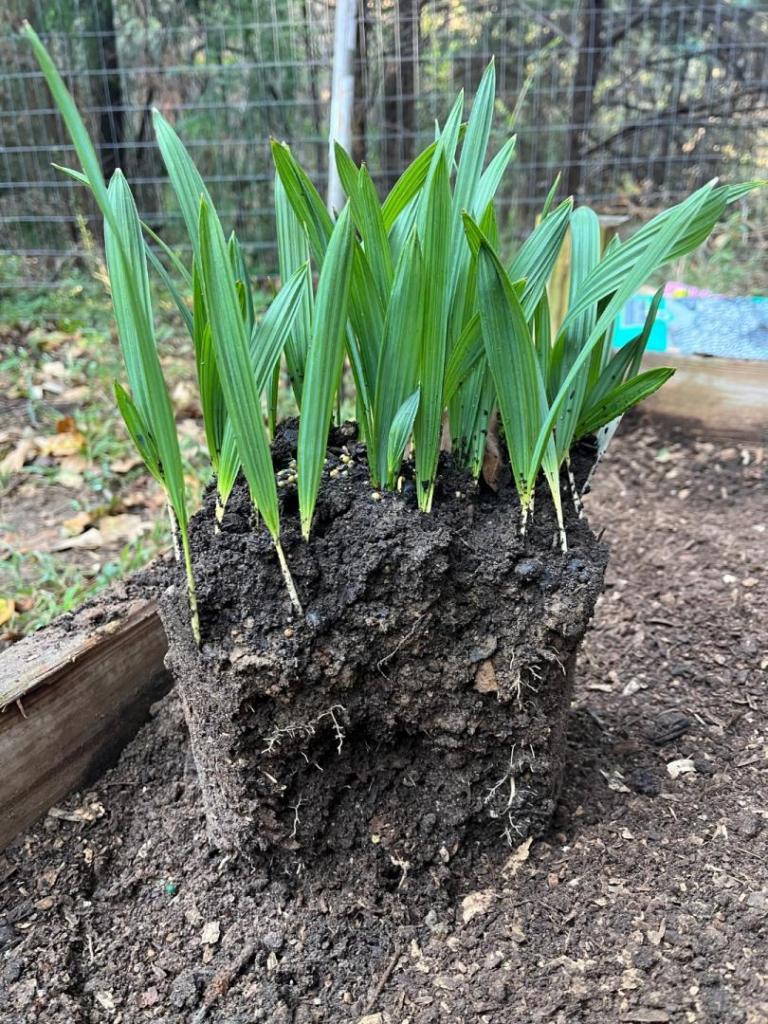Leaderboard
Popular Content
Showing content with the highest reputation on 07/24/2024 in all areas
-
Last year I collected seeds of a mature Dypsis decipiens that I planted in my parents garden many years ago. The seeds were cleaned and I put them in the refrigerator for a few months, waiting for warmer weather. In december my son Leonard ( who studies agronomics) planted them out in big pots. Maybe 1/4 of them germinated and today he and his sister Lydia transplanted 51 seedlings in individual pots. The first brazilian "manambe palms".6 points
-
6 points
-
6 points
-
While the below pictures don’t look like much now, I have hopes that this newly planted Tahina Specatbilis will be one of the gems of the garden soon. A quick backstory on this palm. Jeff at Floribunda gave this plant to me when we bought this property about 3.5 years ago. It was the very last one he had, I believe from the original seed batch years ago. It was languishing in a 5 gallon pot and had no sign of new growth as the spear had just pulled out. He gave it to me with hopes that it would recover. Since I had no idea where to plant it and wanted to wait til the house was finished, it remained in a pot until this past week. Over the past 3+ years it actually appeared to die off 3 different times! Although it recovered from its original spear pull, it eventually stopped growing. I carefully removed it from the pot, only to find an entire new growth point (a “doinker”) growing out about 180 degrees from the previous growth. I carefully replanted it in a larger pot, added new soil and fertilizer and it recovered for about a year. Then it happened again! In total this happened 3 times, all while I was trying to finish construction and envision a future home in the ground for this prized palm. Right before planting it, we went through a dry spell here without rain and I noticed sunburn on the Tahina, for the first time ever. I was worried that after all these years it was just going to dry out and die. I quickly soaked the pot with water and decided then that I needed to get this palm in the ground. Besides being the first palm I planted after moving into the house, it is also sentimental as it was planted on the day that we had to put down one of our dogs. So it is planted in memory of our sweet Gracie and in celebration of completing construction on the new house. Planted in memory of the sweetest dog we’ve ever had, Gracie. The picture below is the day before she went on to meet up with Rocky, who we lost earlier this year. She loved slowly exploring the new garden. Rocky and Gracie5 points
-
Years ago I made the hybrid of both species: The dwarf S. microphylla from the caatinga vegetation of the st. Bahia, crossed with the cold hardy Syagrus romanzoffiana from the tablelands of Paraná. I don't know what to expect from it. Maybe a cold hardy and chunkier Syagrus with somewhat silver leaflets???4 points
-
4 points
-
I had been driving by my old Washy pal for months thinking it had given up after 4 winters of 0° to single digit exposure! This one, by a Mexican restaurant in Garland, Texas (last 30 odd years), is a true fighter! Surely one of only a handful that are left in N Tx area with any sort of trunk. And it is totally exposed in a concrete surrounded jungle! 🥰3 points
-
3 points
-
3 points
-
As summer and the heat arrived to Hungary I will post some pictures of my garden 😁 Palms and plants that I have planted outside: Phoenix canariensis Phoenix Sylvestris Butia Capitata Brahea Armata Sabal Palmetto Trachycarpus fortunei Trachycarpus fortunei x takil Chamaerops humilis Syagrus Romanzoffiana Rhapis excelsa Washingtonia Filifera Cyathea Australis Dicksonia Antarctica Cycas Revoluta (and another type of cycas which I have no idea how is it called) Lots of type of yuccas, agaves, alocasias, colocasias and others 🙂3 points
-
@Harry’s Palms I agree. Although I planted one other trachy earlier this year that was a greenhouse or shade grown plant as it looked very similar to Dave’s although much smaller. I planted it directly in the ground where it sees 8-9 hours of west Texas sun. It has suffered big time. I don’t think it’s going to look good until all the old fronds die and are cut off and the new ones acclimate to the high sun conditions. It may take a year.3 points
-
3 points
-
@Merlyn is right, I followed that protocol for a Neoveitchia that developed a slight Boron deficiency just as you pictured. One treatment and the new leaves are now back to normal. It took about 3 new leaves until the symptoms were completely resolved.3 points
-
@Foggy Paul the same UFL website has another boron page: https://edis.ifas.ufl.edu/publication/EP264 Near the bottom they say "Dissolve about 2–4 oz of Solubor® or Borax in 5 gallons of water and drench this into the soil under the canopy of a single palm." I might do 0.5 to 1oz and see if it comes back in future fronds. A bit of accordion leaf is fairly mild, and too much boron can be phytotoxic.3 points
-
Solid! Nice work, Darold. Your Dypsis baronii "black stem" is very happy here in Leucadia. Thanks again for your visit. I'm flying into SFO to check out your neck of the woods for my first time on Thursday. Hope all is well. -Billy3 points
-
3 points
-
Hey everyone, hope everyone is having a great growing season! This is my annual NYC palm post. This palm just keeps growing. It grows all seasons (including winter) im guessing it's at least 15 feet? My daughter is 5'6. I've seen other windmills but they where in a greenhouse in the Bronx botanical garden. If anyone has some pics of there east coast palms please post.. thanks in advance... Bobby2 points
-
I just wanted to share this new windmill palm that I planted. It was a 30 gallon that I got from a local nursery. The pot was packed full of roots so it already has a healthy system. Trunk is about 2.5’ and thick. Short fronds and light color. Been in ground about a month in 4 hours of sun each day is all it will get. So far middle frond is growing out. Will be interesting to see what sun grown trachy does in partial sun. So far seems happy.2 points
-
2 points
-
Depends on the palm species, location and climate. In zone 10a in FL they might throw adult leaves in 2-3 years. In your 7b climate that might take 3-5 years or more.2 points
-
I offer one plant, 5 gallon size in an 8x8x12 Stuewe citrus pot. It is 4 years and 8 months from seed, and has been outdoors in bright shade for over a year. The stem diameter is about 1 3/8 inches in diameter. It is not fully rooted into this pot, and can remain in this pot for another year. No shipping, you must take delivery at my garden in SF. $50, PM me for details Thanks2 points
-
2 points
-
I've spent a lot of time looking for palms in the I-95 states (Mid-Atlantic/Northeast)...and it seems for the most part that there are few long term plantings above the zone 7 areas. North of Virgnia Beach...mostly from eastern/southern Maryland to coastal Rhode Island) is where it seems most of the palms are (zone 7a/b). Just 25 - 50 miles inland and you see very few. So mostly in coastal Maryland/southeastern Maryland, most of Deleware, southern/coastal NJ, NYC area, Long Island, coastal/southern Connecticut, and coastal Rhode Island. As to the northernmost, it's hard to say. Coastal Del/Ocean City, MD has many bigger ones, like this one in Rehobeth Beach, DE I took last year: (about 15 - 18 feet tall): There are several big windmills on Long Island and coastal New Jersey that I have seen , maybe 12 - 15 feet tall. One of the biggest Palmettos I've seen north of VA Beach is the famous one in front of the University of Bridgeport on the Connecticut coast of Long Island Sound, maybe 15 - 18 feet tall: As far as Pindo's ...I see some now and then in the Ocean City, MD/DE coast, and I've seen one growing in Atlantic County, NJ maybe 8 feet tall. I'm sure there are a few near me on Long Island/coastal Connecticut, but I've never seen even one. This is mine, it's about 7 feet tall:2 points
-
here, "East Coast" means Northeast Corridor lol. That's my guess haha. Shhh, or Florida will enter the chat2 points
-
That's a super cute species Alberto. I think we need you to send us some seeds from Bahia. I would be happy to grow it in a pot in my greenhouse next to my S schizophylla and S ruschiana. Just an idea!2 points
-
2 points
-
Why not both? Sabal minor is great to provide nutritious berries to a wide variety of native birds and mammals, while S. brazoriensis can provide a more conventional palm tree look in hot-summer climates that have mild winter averages but regularly get below 10 degrees Fahrenheit (which puts Trachycarpus, Jubaea and S. palmetto off the table for those of us that have to deal with single-digit winters, not to mention Jubaea also struggles with high dew points). I intend to get S. brazoriensis as soon as possible after watching Trachycarpus and other tree-sized Sabal species crash and burn after a few years in the ground throughout Middle Tennessee, and both my S. minor and Rhapidophyllum survived -2 degrees Fahrenheit in December 2022 and -13 in January 2024 unprotected after only a few years in the ground. They were damaged but unprotected, except the Rhapidophyllum which wasn't damaged at all in 2022. On the other hand, S. brazoriensis can handle near-zero cold waves with no damage as @Allen has realized, whereas even S. louisiana and S. birmingham need it not to regularly get below 5 degrees Fahrenheit.2 points
-
2 points
-
The super mule is BxJxBxS (Butia X Jubaea X Butia X Syagrus) ————————————————————————————————— Quick update: I meant to take some pics of my BxJ after mowing but forgot to. It’s put on some size this year and I’m quite proud of it. Otherwise, here is the Livistona nitida from @palmsrgreat, it is very happy and putting out some deep green fronds now! Very excited to see how this one does in the coming years. At the end of May, I decided it was time to dig up my satsuma mandarin and move it to the backyard. Since then, it has put on tremendous growth! Here is a pic from early April, it was putting out some new growth then, but the growth didn’t last long. After this despite fertilizer and water, it stopped growing after flowering and dropping all the baby fruits (which was expected), and it began losing leaves. Upon digging it up, it hadn’t gained much root ball at all since planting a year ago. Now coming up on 2 months since transplant, it’s doing quite well with some real branches coming out. Very happy with this, and if this trend continues I might get lucky and get a fruit or two off of it next year. Until the tree gets large I’ll be protecting it, once it gets large it’s pretty well hardy to z8b, so at that point cold shouldn’t be much of a problem. I’ll be clearing out a bigger area for it soon for a little more mulch and then eventually pine needles on top of that, which other plants in the yard seem to appreciate. Something about the soil in the backyard trees really like. My maple tree had a similar outcome when moved from the front to back, it exploded in growth as well.2 points
-
2 points
-
Tracy, I wouldn’t be surprised if it was labeled correctly. I see Arenarius and Horridus in there. The leaflets are turned into themselves like you’d see on Horridus. I have Arenarius x Horridus that pushes purplish/blue fronds when flushing and is a pretty blue plant when hardened off. I also have an Arenarius Blue (pic) that pushes a green flush and turns to a shade of blue when it gets its sunscreen protection. what’s awesome about your plant is the leaf stacking. I think that’s where the Latifrons comes into the recipe. Like I said, I think it might be correct. Your eye is much sharper than most with Cycads. Plant looks great to me. -dale2 points
-
Very ripe B.eriospatha fruits also look like this. To be certain of the species ( eriospatha / odorata) you will have to see the brown spathe covered with a thick layer of wooly tomentum of the B.eriospatha2 points
-
Absolutely flawless Alberto!!! Clearly not slow when they are happy.2 points
-
Filifera is tricky in a wet winter climate. They're tough to get going even in our summers, with all the rain.2 points
-
2 points
-
Have 10 total of these for sale. These are really overgrown and should have gone in 7 gallon pots this year. These are big landscape ready palms. If you can find them somewhere else that will ship buy them, I don’t think you’ll find them though. Sabal Brazoriensis 5 gallon qty 1 plus shipping to your front door for $140. First come first pick, they’re all comparable, but there’s one double in the mix. PayPal or cash in the mail only. PM me if interested.The double is middle row on the rightCouple individual shotsThat pot is super full of rootsThat one has a major heel2 points
-
2 points
-
2 points
-
Bill, First of all, I am so sorry that you (and many others) are going to miss out on the incredible New Caledonia experience. I know how much this meant to you. I was not signed up for the Biennial myself, but for reasons that I'm sure you are aware of, I have been keeping close tabs of what's going on in New Caledonia in general and also, more specifically, how this has impacted airline services to and from Noumea. There has been no change since my post above (of July 13th). Other than the occasional charter flight (by other operators), AirCalin remains the only airline with scheduled service to and from Noumea. Today (which is Wednesday July 24th in New Cal) AirCalin has two scheduled arrivals, one from Singapore and one from Nadi, both with their A330-941s. Incidentally, above I referred to them as A350-941s but they are in fact A330-941s - both widebodies and very similar. Unless there is some dramatic change in New Caledonia with increased unrest I would expect AirCalin to continue to operate as they currently are and the likelihood of AirCalin canceling the flight(s) you're on is probably fairly small. If I were you I would not assume a cancellation and would act accordingly. In other words, proactively contact them and change my plans. Best of luck! Bo-Göran2 points
-
I see @Merlyn tagged this thread recently and I should note my D (now C.) cannaliculata is growing quite well. No trunk yet, but 10'+ leaves. Anyway, one observation I have had about "true" doinkers/dweezles is that for the most part I have found is that if the "main" plant has stopped growing, and you eventually find the dweezle/doinker the key is TO CONTINUE WHAT YOU WERE DOING OVER THE PRIOR FEW MONTHS. I have killed more than a couple , or seen ones that have succumbed ton increased water, fertilizer, etc. The plant has figured out how to keep going with what you are doing. ...(It could be LESS water, etc.) so adding more of something at that point has more often than not had a deleterious effect.2 points
-
The 'blue' big box store here in SF sells Hyophorbe, Lantania, and Wodyetia. Apparently the clueless customers will buy any pretty thing.2 points
-
3 Clinostigma Samonense outline this planter, with several pritchardia also in there, just hard to see as they are struggling and slow growing 3 Clinostigma Ponapense with a Samoan dwarf coconut plenty of palms on deck, waiting to be planted as I find the time. Fresh load of mulch ready to go too. Not enough hours in the day. stay posted for more updates, thanks for looking!2 points
-
The year long process of building our home is complete (still painting though)! This was a huge job for me as I was doing this all as an Owner Builder. The garden was neglected as I managed workers, dug trenches, installed water lines and anything else that needed to be done. We moved in on July 3 and I’m just now getting back to planting in the garden. Suubi agrees that waking up to this view just doesn’t feel real! I installed stainless cable railings and love how they turned out. Still need to paint the deck, hopefully next week. Morning garden walks have been incredible and it’s a treat to experience this garden in the early morning2 points
-
2 points
-
2 points
-
2 points
-
2 points
-
Very cool Alberto. I’ve really got a thing for the rare, dwarf Syagrus lately and S microphylla is at the top of my list. I got a batch of 10 seeds from RPS (paid $$$$) last year but unfortunately all looked rotten soon after sowing. They are a really attractive palm in my opinion and the hybrid should be interesting. Unfortunately not many Syagrus are available in Aus or even planted in many gardens (other than S rom).1 point
-
There are so many different kinds of tropical and subtropical flora in the Parque de Málaga , it was amazing! The following pictures are just a few of the many palms and similar type of plants that are on display in this outdoor public garden. Sabal Palmetto Roystonea Oleracea ( Caribbean Royal palm ) Cryosophila Warscewiczii ( Palma De Escoba - " Broom's Palm " ? ) Beaucarnea Recurvata ( ponytail palm ) not a true palm Rhapis Humilis ( Slender Lady Palm ) Dypsis Leptocheilos ( Teddy Bear Palm ) Jubaeophis Caffra ( Pondoland palm ) Yucca elephantipes var. gigantea ( "palm like", but also not a palm ) Hyphaene Coriacea ( the Lala palm )1 point
-
1 point

